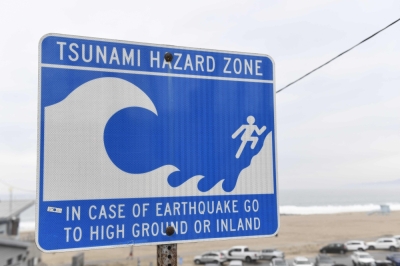Shanghai, July 30 – A tense calm settled over Shanghai on Wednesday as the city sprang into action to safeguard lives in the face of tropical storm Co-May. With winds howling and skies unleashing sheets of rain, the city—home to over 25 million people—made swift decisions: more than 280,000 residents were evacuated, hundreds of flights were cancelled, ferries suspended, and roads restricted to keep everyone safe.
In the early hours, Co-May made landfall in Zhoushan, a key port city in neighbouring Zhejiang province. Its arrival came with a rare double threat—news of a tsunami warning triggered by a massive 8.8 magnitude earthquake off Russia’s Kamchatka Peninsula. With tension mounting, authorities in Shanghai braced for the worst: a storm surge amplified by seismic tremors thousands of kilometres away.
Fortunately, later in the day, the tsunami warnings for Shanghai and Zhoushan were lifted. But the city’s proactive steps remained a powerful display of preparedness.
While Co-May’s winds didn’t reach typhoon levels, the response from Shanghai showed just how seriously the region takes any weather-related threat. More than 640 flights were expected to be grounded at the city’s two major airports—Pudong and Hongqiao. Ferry services were halted early Wednesday, and traffic was slowed on highways to prevent accidents.
Forecasters predicted that within just six hours, the city could be drenched in up to 100 mm of rain—about a month’s worth. Concerns about waterlogging in central districts led to the closure of several parks and the city zoo. Interestingly, while Legoland and Disneyland remained open, some rides and shows were suspended out of caution.
Across the Yangtze River delta, the ripple effects continued. Cities like Ningbo, Wenzhou, and Hangzhou faced flight cancellations and diversions, while train services slowed or stopped altogether.
Co-May, with sustained wind speeds of 83 km/h, is expected to make another landfall closer to Shanghai later today. Though the city has avoided direct hits from many recent storms, memories of Typhoon Bebinca’s impact last year remain fresh, marking it as the most powerful cyclone to hit Shanghai since 1949.
By Wednesday morning, coastal waters near the city were predicted to rise as high as 180 cm. Yet Shanghai’s marine authorities reassured the public that tidal waves would not exceed warning thresholds.
This unfolding event is more than just a weather story—it’s a reminder of the delicate balance between nature and our cities. Shanghai’s response has shown that preparation, swift communication, and collective responsibility can protect millions when every second counts.




